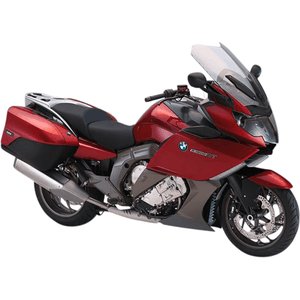BMW K 1600 GT (2011-2016): A Masterclass in Touring Sophistication
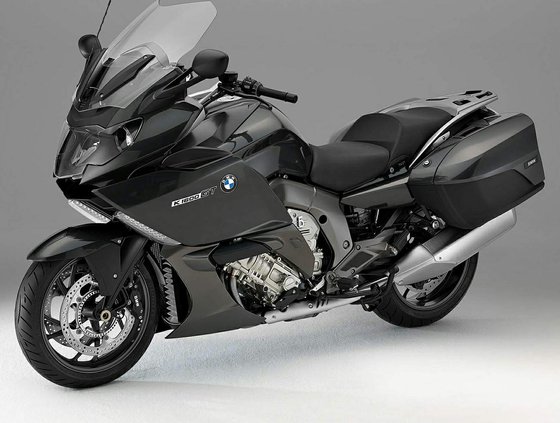
When BMW Motorrad introduced the K 1600 GT in 2011, it redefined what a touring motorcycle could be. Combining the soul-stirring power of a transversely mounted inline-six engine with cutting-edge technology and long-distance comfort, this machine became an instant icon. Having spent time with a well-maintained 2014 model, it’s clear why the K 1600 GT remains a benchmark in the touring segment even years after its debut.
The Heart of the Beast: The 1,649cc Inline-Six
At the core of the K 1600 GT lies its pièce de résistance: a liquid-cooled, 1,649cc inline-six engine producing 160.5 hp @ 7,750 rpm and 129 lb-ft (175 Nm) of torque @ 5,250 rpm. What’s staggering isn’t just the numbers—it’s how effortlessly this power is delivered. Over 70% of peak torque is available from just 1,500 rpm, meaning you’re rarely left hunting for overtaking power.
Twist the throttle, and the engine responds with a turbine-like smoothness that borders on surreal. The mechanical symphony—a blend of gear-driven camshaft whine and a muted exhaust growl—adds drama without crossing into obtrusiveness. At highway speeds (100-130 km/h or 62-80 mph), the tachometer hovers around 3,500 rpm in sixth gear, leaving vast reserves of power for quick passes.
Riding Modes & E-Gas
The ride-by-wire throttle (“E-Gas”) enables three selectable modes:
- Rain: Limits power to 136 hp and softens throttle response.
- Road: Full power with linear delivery.
- Dynamic: Sharpens throttle response for sportier riding.
In practice, “Road” strikes the best balance for touring, while “Dynamic” transforms the GT into a surprisingly agile machine on twisty backroads.
Chassis & Handling: Defying Physics
For a motorcycle weighing 319 kg (703 lbs) wet, the K 1600 GT handles with a nimbleness that belies its size. Credit goes to BMW’s innovative chassis design:
- Duolever Front Suspension: A longitudinal control arm setup that minimizes dive under braking.
- Paralever Rear Suspension: A single-sided swingarm with shaft drive, optimized for stability.
- Low Center of Gravity: The engine’s compact width (555 mm) and forward tilt concentrate mass near the rider’s feet.
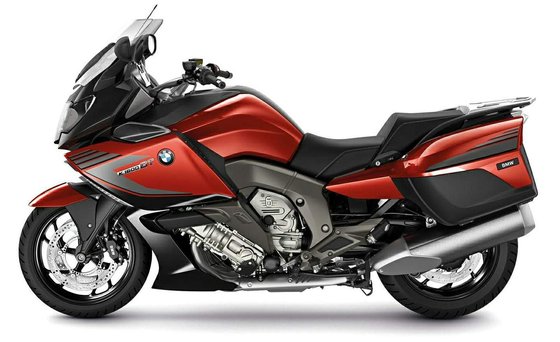
Lean the GT into a corner, and it responds with the precision of a sportbike. The 62.2° steering head angle and 108.4 mm (4.3 in) of trail contribute to light yet confident steering. Ground clearance is generous, though the cylinder heads will scrape if you push too aggressively—a gentle reminder to respect the bike’s touring focus.
Electronic Suspension Adjustment (ESA II)
Optional ESA II allows on-the-fly adjustments to damping and preload. “Comfort” soaks up broken pavement, while “Sport” firms up the ride for spirited riding. The system’s ability to adapt to passenger/luggage loads is a godsend for two-up touring.
Comfort & Ergonomics: A Mobile Living Room
BMW’s focus on rider comfort shines through:
- Adjustable Seat Height: Ranges from 780-830 mm (30.7-32.7 in), accommodating most riders.
- Electrically Adjustable Windshield: A 10 cm (4 in) range lets you fine-tune airflow. At full height, it creates a quiet bubble even at 140 km/h (87 mph).
- Heated Everything: Grips, seats (rider and passenger), and even optional leg vents ensure comfort in cold weather.
The riding position strikes a perfect balance between a relaxed upright stance and slight forward lean, reducing fatigue on 500+ km (310+ mi) days. Pillion passengers rave about the spacious seat and integrated grab handles.
Technology: A 2010s Tech Showcase
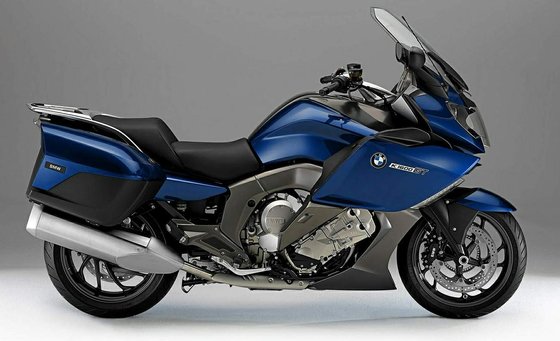
The K 1600 GT’s dashboard—a mix of analog gauges and a 5.7-inch TFT display—feels premium even by today’s standards. Standout features include:
- Adaptive Headlight: Optional cornering lights that pivot with lean angle.
- Multi-Controller: A BMW iDrive-like knob for navigating menus.
- Cruise Control: Smooth and intuitive, perfect for long slogs on autobahns.
- Audio Preparation: Built-in wiring for Bluetooth headsets and GPS units.
While the infotainment lacks Apple CarPlay/android Auto integration (a quibble by modern standards), the analog-inspired interface has aged gracefully.
Competition: How the GT Stacks Up
1. Kawasaki Concours 14 (2008-2020)
- Pros: Lighter (319 kg vs 319 kg), cheaper, sharper handling.
- Cons: Rougher 1,352cc inline-four, inferior wind protection.
Verdict: The Concours appeals to budget-conscious sport-tourers, but the BMW’s refinement is untouchable.
2. Honda Gold Wing (2001-2017)
- Pros: Legendary comfort, flat-six character, higher payload.
- Cons: Heavier (417 kg wet), less engaging to ride.
Verdict: The Gold Wing is a rolling sofa; the GT is a sportier, more modern alternative.
3. Yamaha FJR1300 (2001-2020)
- Pros: Lighter (289 kg wet), lower seat, proven reliability.
- Cons: Less tech, buzzy 1,298cc inline-four.
Verdict: The FJR is a workhorse; the GT is a tech-laden grand tourer.
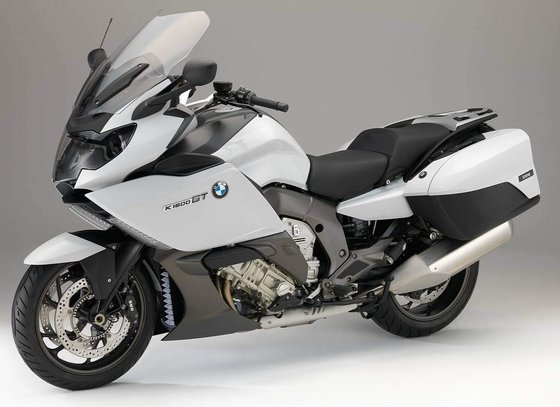
Maintenance: Keeping the Six-Cylinder Singing
While the K 1600 GT’s shaft drive reduces chain maintenance, attention to these areas ensures longevity:
Key Service Items
- Oil Changes: Every 10,000 km (6,200 mi) with 4.5L of SAE 5W-40.
- Valve Adjustments: Every 40,000 km (24,850 mi). Intake: 0.13-0.23 mm; Exhaust: 0.23-0.33 mm.
- Brake Pads: Replace sintered pads every 25,000-30,000 km (15,500-18,600 mi).
- Tires: The OEM Metzeler Roadtec Z8 Interacts last ~12,000 km (7,500 mi).
Common Upgrades
- Aftermarket Exhausts: Reduce weight and amplify the six-cylinder soundtrack.
- LED Auxiliary Lights: Improve visibility on poorly lit roads.
- Custom Seats: Addresses the stock seat’s firmness for some riders.
Pro Tip: Use the 580W alternator to power heated gear without straining the electrical system.
The Verdict: Timeless Grand Touring
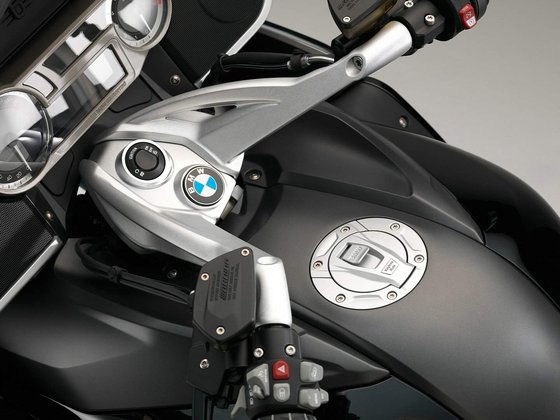
The BMW K 1600 GT isn’t just a motorcycle—it’s a statement. Few bikes blend continent-crushing comfort with sports sedan agility so convincingly. While newer models have since emerged, the 2011-2016 generation remains a compelling choice for riders who value engineering artistry.
Whether you’re carving Alpine passes or devouring interstate miles, the GT delivers with a sophistication that still feels fresh. And with MOTOPARTS.store’s extensive catalog of OEM and upgraded components, keeping this six-cylinder masterpiece in peak condition has never been easier.
Ride it once, and you’ll understand why BMW’s inline-six is the stuff of legends.
































Specifications sheet
| Engine | |
|---|---|
| Stroke: | Four-stroke |
| Ignition: | Digital CDI |
| Fuel type: | Premium unleaded (95 RON) |
| Max power: | 118 kW | 158.0 hp |
| Alternator: | 580 W |
| Max torque: | 175 Nm |
| Fuel system: | Electronic intake pipe injection, digital engine management (BMS-X) |
| Max power @: | 7750 rpm |
| Displacement: | 1649 ccm |
| Max torque @: | 5250 rpm |
| Bore x Stroke: | 72 x 67.5 mm |
| Configuration: | Inline |
| Cooling system: | Liquid cooled |
| Compression ratio: | 12.2:1 |
| Number of cylinders: | 6 |
| Dimensions | |
|---|---|
| Wheelbase: | 1680 mm (66.1 in) |
| Dry weight: | 295 |
| Wet weight: | 319 |
| Seat height: | 810-830 mm (31.9-32.7 in) standard / 780-800 mm (30.7-31.5 in) optional / 750 mm (29.5 in) accessory |
| Fuel reserve: | 4.0 L (1.1 US gal) |
| Overall width: | 1000 mm (39.4 in) |
| Overall height: | 1465 mm (57.7 in) |
| Overall length: | 2489 mm (98.0 in) |
| Fuel tank capacity: | 26.5 L (7.0 US gal) |
| Drivetrain | |
|---|---|
| Gear Ratio: | 1st 2.23 / 2nd 1.641 / 3rd 1.319 / 4th 1.101 / 5th 0.926 / 6th 0.788 |
| Final drive: | shaft |
| Transmission: | 6-speed, hydraulically activated wet clutch |
| Electronics | |
|---|---|
| Battery: | 12 V / 19 Ah maintenance-free |
| Riding modes: | Rain, Road, Dynamic |
| Standard features: | Xenon headlight, heated grips, heated seat, cruise control, onboard computer |
| Maintenance | |
|---|---|
| Engine oil: | 10W40 |
| Brake fluid: | DOT 4 |
| Spark plugs: | NGK LMAR8AI-8 |
| Spark plug gap: | 0.8 |
| Final drive oil: | 180 ml 75W-90 GL-5 |
| Coolant capacity: | 3.5 |
| Engine oil capacity: | 4.5 |
| Engine oil change interval: | Every 5000 km or 2 years |
| Valve clearance (intake, cold): | 0.13–0.23 mm |
| Valve clearance check interval: | 24,000 km / 15,000 mi |
| Valve clearance (exhaust, cold): | 0.23–0.33 mm |
| Recommended tire pressure (rear): | 2.5 bar (36 psi) solo / 2.8 bar (41 psi) with passenger |
| Recommended tire pressure (front): | 2.25 bar (33 psi) |
| Chassis and Suspension | |
|---|---|
| Frame: | Aluminum bridge-type frame |
| Wheels: | Cast aluminum (3.0 x 17 front / 6.00 x 17 rear) |
| Rear tire: | 190/55 z-17 |
| Front tire: | 120/70 z-17 |
| Rear brakes: | 1 x 320 mm disc, 2-piston caliper (BMW Motorrad ABS) |
| Front brakes: | 2 x 320 mm discs, 4-piston calipers (BMW Motorrad ABS) |
| Rear suspension: | BMW Motorrad Paralever (single-sided swing arm) |
| Front suspension: | BMW Motorrad Duolever, central spring strut |
| Rear wheel travel: | 135 mm (5.3 in) |
| Front wheel travel: | 115 mm (4.5 in) |



